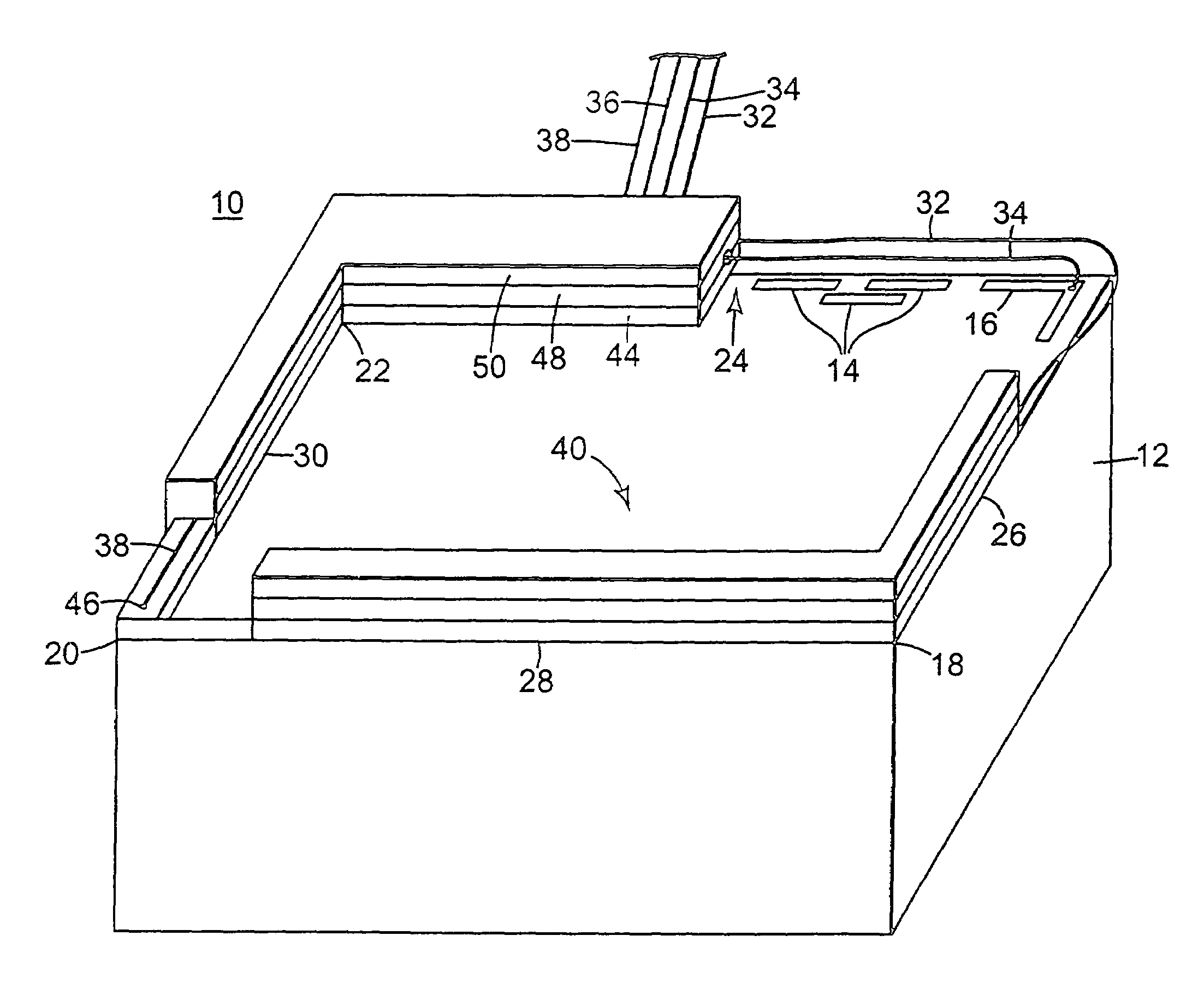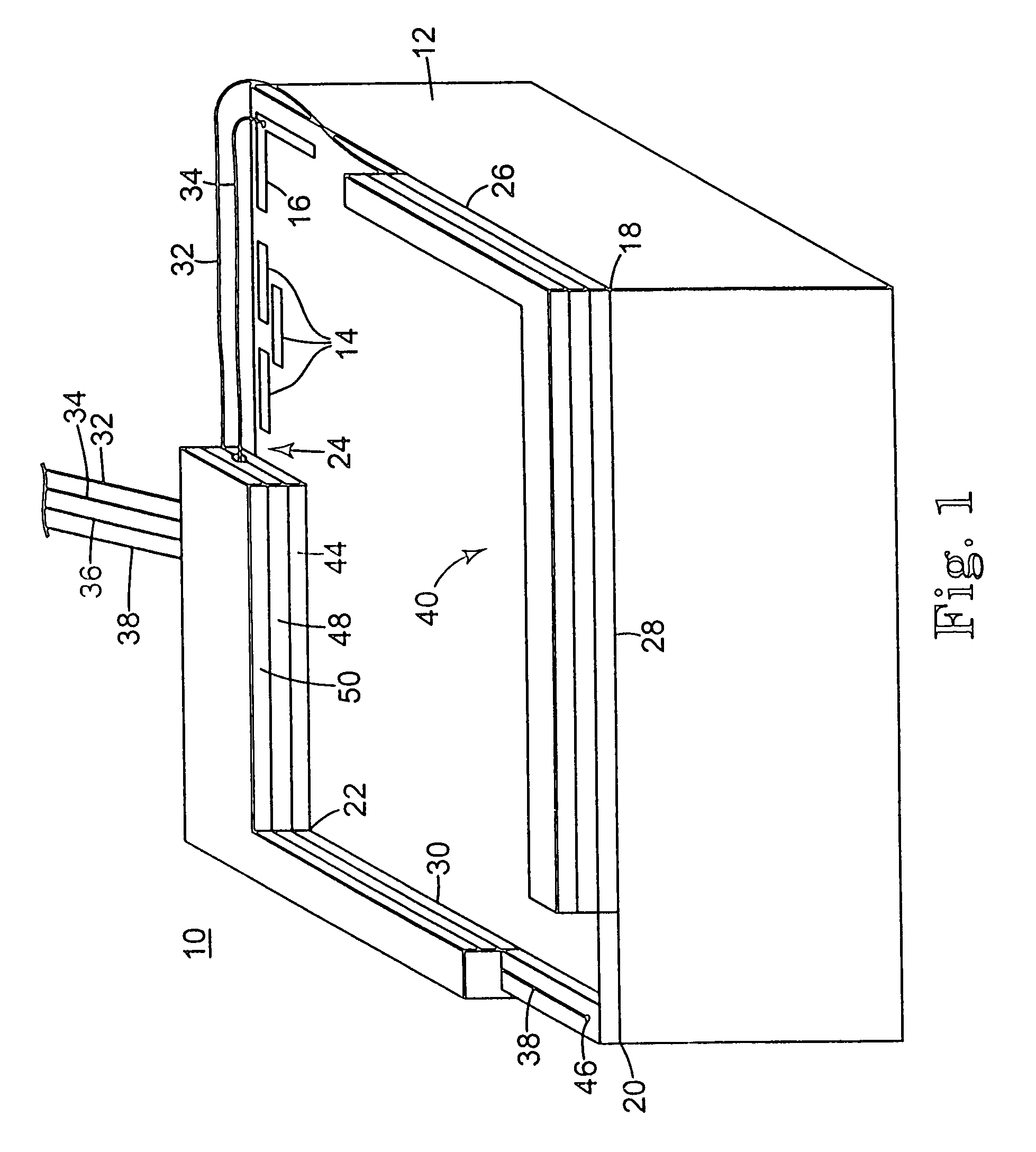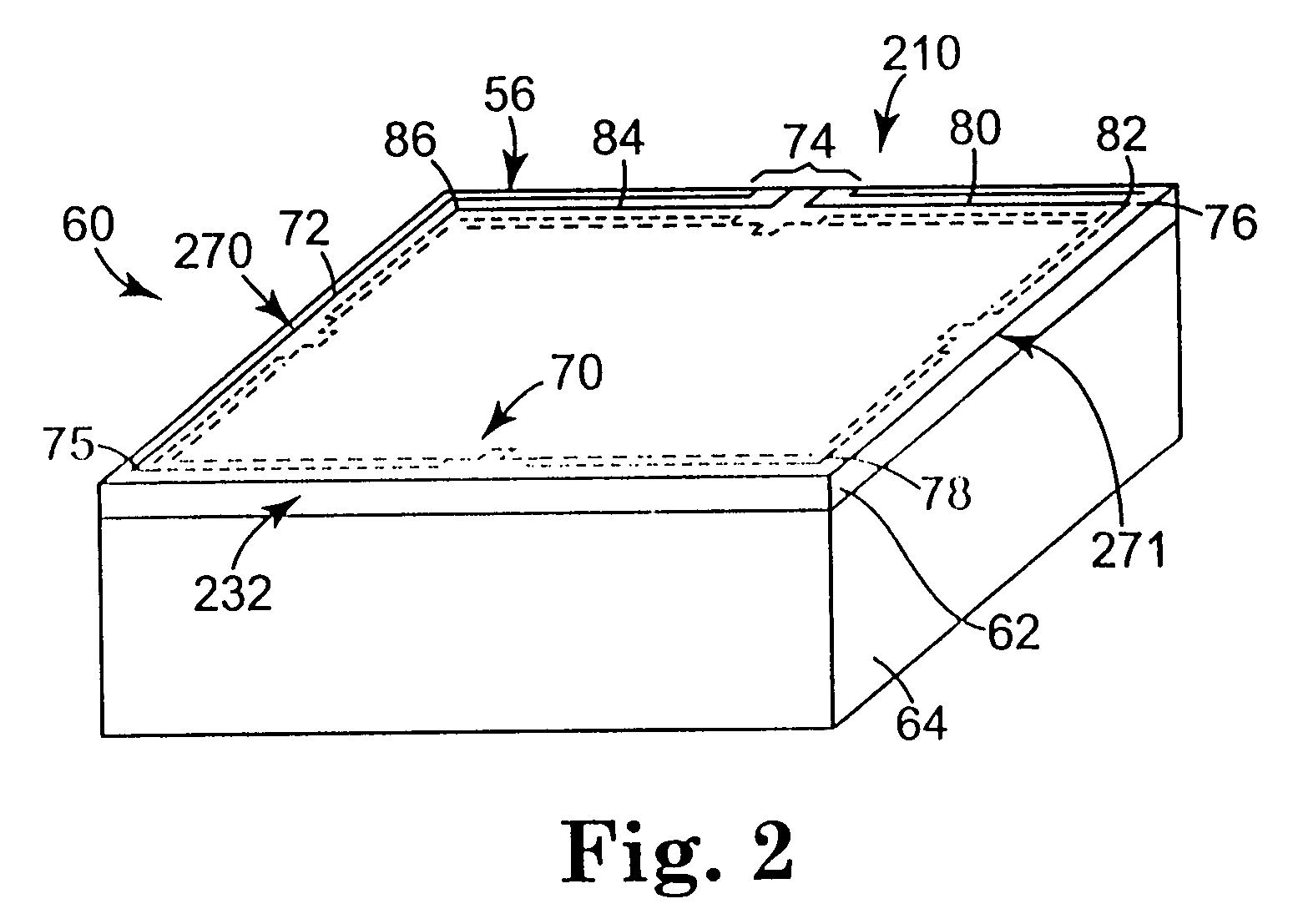Method of applying an edge electrode pattern to a touch screen
- Summary
- Abstract
- Description
- Claims
- Application Information
AI Technical Summary
Benefits of technology
Problems solved by technology
Method used
Image
Examples
Embodiment Construction
[0051]Prior art touch screen panel 10, FIG. 1, includes substrate 12 which usually includes or is an insulative layer (e.g., glass), a resistive layer over the primary working surface of the insulative layer, and a pattern of edge electrodes 14 and terminal electrodes, usually corner electrodes such as electrode 16, on the resistive layer as is known in the art. There are additional corner electrodes (not shown) one at each other corner 18, 20, and 22 of the touch screen. The edge electrodes 14 repeat in some predetermined patterned fashioned along each edge 24, 26, 28, and 30 of panel 10. In the prior art, wires 32, 34, 36, and 38 extend to each corner electrode and with their ends stripped of insulation are soldered to the respective corner electrodes in order to generate the appropriate electrical field across the working or active surface 40 of panel 10. So, for example, wire 32 extends along edges 24 and 26 of panel 10 to the corner electrode (not shown) at corner 18; wire 34 e...
PUM
| Property | Measurement | Unit |
|---|---|---|
| Temperature | aaaaa | aaaaa |
| Temperature | aaaaa | aaaaa |
| Pressure | aaaaa | aaaaa |
Abstract
Description
Claims
Application Information
 Login to View More
Login to View More - R&D
- Intellectual Property
- Life Sciences
- Materials
- Tech Scout
- Unparalleled Data Quality
- Higher Quality Content
- 60% Fewer Hallucinations
Browse by: Latest US Patents, China's latest patents, Technical Efficacy Thesaurus, Application Domain, Technology Topic, Popular Technical Reports.
© 2025 PatSnap. All rights reserved.Legal|Privacy policy|Modern Slavery Act Transparency Statement|Sitemap|About US| Contact US: help@patsnap.com



